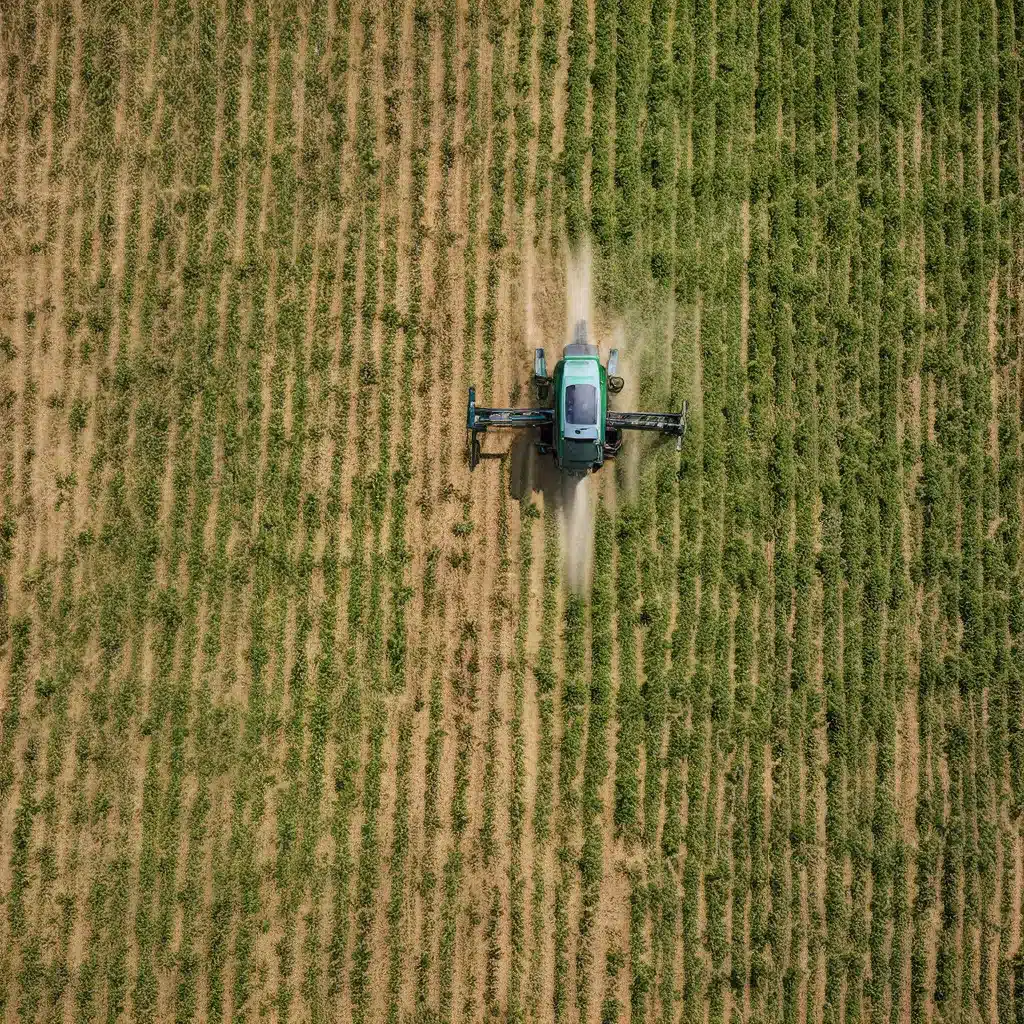
The Rise of Sensor Networks in Precision Farming
In the ever-evolving landscape of modern agriculture, the integration of sensor networks and Internet of Things (IoT) technologies has emerged as a game-changing approach to precision farming. By deploying sensor swarms across vast agricultural landscapes, farmers and agronomists can now gather a wealth of real-time data, enabling them to make more informed decisions and optimize crop yields like never before.
Sensor networks are the backbone of this precision agriculture revolution, acting as the eyes and ears of the farm. These interconnected arrays of sensors can monitor a multitude of environmental factors, from soil moisture and nutrient levels to weather patterns and pest infestations. By collecting and analyzing this data, farmers can tailor their irrigation, fertilization, and pest control strategies to the specific needs of each crop, maximizing efficiency and minimizing waste.
Designing Resilient and Scalable Sensor Networks
Constructing an effective sensor network for precision agriculture requires careful planning and design. One of the key considerations is the network topology, which determines how the individual sensor nodes are connected and communicate with each other. Common topologies include star, mesh, and cluster-tree configurations, each with its own advantages and trade-offs in terms of scalability, resilience, and energy consumption.
| Topology | Scalability | Resilience | Energy Consumption |
|---|---|---|---|
| Star | Moderate | Low | Moderate |
| Mesh | High | High | High |
| Cluster-Tree | High | Moderate | Moderate |
Another crucial aspect of sensor network design is power management. As these systems are often deployed in remote or hard-to-access areas, minimizing energy consumption is essential to ensure long-lasting operation and reduce maintenance requirements. Techniques such as duty cycling, energy harvesting, and low-power communication protocols can help extend the battery life of sensor nodes and optimize the overall energy efficiency of the network.
Securing Sensor Networks against Cyber Threats
As sensor networks become more prevalent in precision agriculture, the issue of cybersecurity has taken on greater importance. These interconnected systems can be vulnerable to a range of cyber attacks, including data manipulation, unauthorized access, and denial-of-service (DoS) disruptions. Implementing robust security protocols and encryption mechanisms is crucial to protect the integrity of the collected data and ensure the reliable operation of the sensor network.
Recent studies have explored the use of blockchain technology and distributed ledgers to enhance the security and transparency of sensor networks in precision agriculture. By recording sensor data and network activities on an immutable, decentralized ledger, these approaches can help mitigate the risk of data tampering and unauthorized access, while also providing a secure platform for data sharing and collaboration among farmers, agronomists, and other stakeholders.
Leveraging Sensor Data for Optimized Crop Management
The true power of sensor networks in precision agriculture lies in the insights gleaned from the collected data. By analyzing soil moisture, nutrient levels, weather conditions, and other crucial variables, farmers can make more informed decisions about irrigation, fertilization, and pest control, leading to significant improvements in crop yields and resource efficiency.
Sensor networks can also play a vital role in early detection and monitoring of plant diseases and pest infestations. By identifying emerging issues quickly, farmers can take immediate action to mitigate the impact and prevent the spread of these threats, ultimately reducing losses and improving the overall health and productivity of their crops.
The Future of Sensor Swarms in Precision Agriculture
As the technology continues to evolve, the potential of sensor networks and IoT in precision agriculture is only expected to grow. Advancements in wireless communication, edge computing, and machine learning are paving the way for even more sophisticated and autonomous sensor swarms, capable of adapting to changing environmental conditions and making real-time decisions to optimize crop yields.
Emerging 5G and low-power wide-area network (LPWAN) technologies are further enhancing the connectivity and data transmission capabilities of sensor networks, enabling the collection and analysis of vast amounts of data from even the most remote agricultural locations. Robotic and autonomous technologies, coupled with sensor networks, are also transforming the way farmers approach tasks such as precision spraying, targeted fertilization, and autonomous harvesting.
As the sensor network revolution continues to unfold, the future of precision agriculture looks brighter than ever, with the promise of increased yields, reduced resource consumption, and improved sustainability for farms of all sizes.